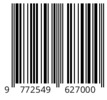Sintesis Produksi Puisi oleh Kecerdasan Buatan: Keterbatasan Fungsi Simbol dan Tanda Perspektif Semiotika Roland Barthes
Abstract
In recent years, the rapid development of Artificial Intelligence has significantly impacted various aspects of life, including the realm of creative writing in literature. One prominent application of AI is ChatGPT, which can synthesize poetry. However, questions have arisen regarding the extent of their ability to understand and replicate symbolic and sign meanings in literary works, particularly in poetry. This research aims to explore the intervention of artificial intelligence in the poetry creation process and identify limitations related to the use of symbolic and sign functions. Utilizing the perspective of Roland Barthes' Semiotics, this study delves into the symbolic meanings in poetry. The research employs a qualitative descriptive method with hermeneutic reading and content analysis of poetry, comparing it with human-authored poetry. The research data consists of poetry created by the artificial intelligence ChatGPT and human-authored poetry. The results indicate limitations in the ability of artificial intelligence to use symbols and signs in poetry, resulting in interpretations that are limited and tend to follow conventional patterns. Artificial intelligence often relies on common symbols and signs, frequently associated with existing cultural myths. Therefore, the role of humans in the creative process remains crucial in literary writing to ensure the diversity of symbols and signs, fostering the development of more innovative and profound interpretations in poetry.
Keywords
Full Text:
PDFReferences
Argenter I Giralt, J. A. (2023). Poetics, parallelism and paralinguistic semiotic systems. Estudis de Literatura Oral Popular, 2023(12), 29–58. https://doi.org/10.17345/elop20233220.
Aritonang, D., & Don Bosco Doho, Y. (2019). Analisis Semiotika Roland Barthes Terhadap Lirik Lagu Band Noah “Puisi Adinda” (Vol. 4, Issue 2).
Auni, L., & Nidawati. (2023). The Semiotic Meaning And Philosophy Of Symbols In The Gayo Ethnic Marriage Processions In Central Aceh. Jurnal Ilmiah Peuradeun, 11(1), 39–58. https://doi.org/10.26811/peuradeun.v11i1.811
Barthes, R. (1986). Semiology and the Urban. In M. Gottdiener & A. Lagopoulos (Ed.), The City and the Sign: An Introduction to Urban Semiotics. Columbia University Press.
Blanchfield, B. (2023). The Postcure and the Lecture Well: A Lover’s Discourse in Light of Barthes’ Late Pedagogy. CounterText, 9(1), 162–177. https://doi.org/10.3366/count.2023.0298
Charalampous, C., & Trigoni, T. (2023). The Semiotic Pulsions Of Dickinson’s Poetry And Their Medicinal Virtues. Theory Now, 6(1), 93–107. https://doi.org/10.30827/tn.v6i1.26012
Deng, S., Wang, G., Wang, H., & Chang, F. (2023). An Artificial-Intelligence-Driven Spanish Poetry Classification Framework. Big Data and Cognitive Computing, 7(4). https://doi.org/10.3390/bdcc7040183
Ettien, K. E. (2023). Approche stylistique de l’énonciation poétique dans Symphonie musicale : pour une poévie de la Vie de Jean-Baptiste Fondjo. E-Scripta Romanica, 11, 118–129. https://doi.org/10.18778/2392-0718.11.11
García, A. B. M. (2016). Symbolic Use of Dress: Related Ritual in English and Spanish Oral Traditions. In Inhabiting the Meta Visual: Contemporary Performance Themes (pp. 115–128). Brill.
Goar, V., Yadav, N. S., & Yadav, P. S. (2023). Conversational AI for Natural Language Processing: An Review of ChatGPT. In International Journal on Recent and Innovation Trends in Computing and Communication (Vol. 11, pp. 109–117). Auricle Global Society of Education and Research. https://doi.org/10.17762/ijritcc.v11i3s.6161
Harel, G. (2023). Mourning through Poetry: Discovering the Lost Love Object and Symbolization of Desire. British Journal of Psychotherapy, 39(2), 290–304. https://doi.org/10.1111/bjp.12816
Hashem, M.,Kamil, S., & Omar, A. (2022). The Symbolic Dimension of Mahfouz’s Novel, al Tariq, The search (1964). From the Symbol of God/Spirituality to Social Problems. World Journal of English Language, 12(8), p142. http://dx.doi.org/10.5430/wjel.v12n8p142
Jácome, V. B. (2023). Myth and Ideology: Workers’ Representation in Harun Farocki’s Audiovisual Essay Arbeiter verlassen die Fabrik. Aisthesis, 73, 319–341. https://doi.org/10.7764/Aisth.73.16
Kirmani, A. R. (2023). Artificial Intelligence-Enabled Science Poetry. ACS Energy Letters, 8(1), 574–576. https://doi.org/10.1021/acsenergylett.2c02758
Lee, Y. (2023). Intermedial narrative as communication media: Imagination, narrative, and selfhood from Peirce’s semiotic perspective. In Semiotics and its Masters: Volume 2 (pp. 207–226). De Gruyter. https://doi.org/10.1515/9783110857801-011
Lee, Y. J., & Kim Do Sung. (2023). The emergence of post-narrativity in the era of artificial intelligence: a non-anthropocentric perspective on the new ecology of narrative agency. Semiotica, 2023(253), 117–154.
Mazzola, G., Dey, S., Chen, Z., & Pang, Y. (2022). Semiotics. In Computational Music Science (pp. 11–28). Springer Nature. https://doi.org/10.1007/978-3-030-85190-3_2
Munteanu, M. (2023). Redefining the Feminine and Feminist Views in Recent Romanian and Russian Poetry. Revista Transilvania, 2023(5–6), 35–40. https://doi.org/10.51391/trva.2023.05-06.04
Mustika, I., Isnaini, H., Terusan Jenderal Sudirman, J., & Barat, J. (2021). Konsep Cinta Pada Puisi-Puisi Karya Sapardi Djoko Damono: Analisis Semiotika Carles Sanders Pierce. 6(1). https://doi.org/10.36722/sh.v%vi%i.436
Nöth, W. (2021). Natural signs from Plato to Thomas A. Sebeok. Chinese Semiotic Studies, 17(4), 551–573. https://doi.org/10.1515/css-2021-2042.
Oriana, Binik. (2023). Forensic psychiatric report and expert positioning: semiotic-narrative analysis of four forensic psychiatric reports in a femicide case.
Pavlenko, O., & Gorodnuk, N. (2023). Semiotics Of The Unnamed In Lesya Ukrainka’s Poem “One Word.” Ezikov Svyat, 21(1), 143–150. https://doi.org/10.37708/ezs.swu.v21.i1.14
Pérez Pozo, Á., de la Rosa, J., Ros, S., González-Blanco, E., Hernández, L., & de Sisto, M. (2022). A bridge too far for artificial intelligence?: Automatic classification of stanzas in Spanish poetry. Journal of the Association for Information Science and Technology, 73(2), 258–267. https://doi.org/10.1002/asi.24532
Rabei, A. M. (2023). A Semiotic Study of the Poem “Dawa’i Al-Hawa” by Mihyar Al-Dailami (d. 428 AH). Dirasat: Human and Social Sciences, 50(2), 367–377. https://doi.org/10.35516/hum.v50i2.49483
Ricardo Espinaza Solar, & Daniela Contreras Ponce. (2020). De Lo Fantástico En La Poesía: Hacia Una Semiótica De La Desaparición. A Propósito De Lectura, Antropofagía Y Picnolepsia En “La Desaparición De Una Familia” De Juan Luis Martínez. SIGNA Revista de La Asociation Espanola de Semiotica, 29, 301–331.
Rivera, M. (2023). A Stylistic Study on the Selected Poems of Rupi Kaurs “Milk and Honey.” World Journal of English Language, 13(7), 315–326. https://doi.org/10.5430/wjel.v13n7p315
Sari Rahayu, I. (n.d.). Analisis Kajian Semiotika Dalam Puisi Chairil Anwar Menggunakan Teori Charles Sanders Peirce (Vol. 15, Issue 1). http://journal.ubm.ac.id/
Sériot, P. (2022). Barthes and Lotman: Ideology vs culture. Zanry Reci, 17(3), 176–185. https://doi.org/10.18500/2311-0740-2022-17-3-35-176-185
Slater, A. (2023). Post-Automation Poetics; or, How Cold-War Computers Discovered Poetry. American Literature. American Literature, 95(2), 205–227.
Tejera, V. (2022). Semiotics: From peirce to barthes: A conceptual introduction to the study of communication, interpretation and expression. In Semiotics: From Peirce to Barthes: A Conceptual Introduction to the Study of Communication, Interpretation and Expression. Brill. https://doi.org/10.1163/9789004451513
Tsvigun, T. V., & Chernyakov, A. N. (2023). ‘Definition Of Poetry’: Frege Vs. Jacobson. Slovo.Ru: Baltic Accent, 14(4), 91–104. https://doi.org/10.5922/2225-5346-2023-4-5
Yelly, P., Stkip, D., & Binjai, B. (2019). Analisis Makhluk Superior (Naga) Dalam Legenda Danau Kembar (Kajian Semiotika Roland Barthes; Dua Pertandaan Jadi Mitos). In Jurnal Serunai Bahasa Indonesia (Vol. 16, Issue 2).
Yulianeta, & Tami, R. (2021). Social satire on higher education: A comparative structural semiotic study of the movies Alangkah Lucunya (Negeri Ini) and Parasite. Indonesian Journal of Applied Linguistics, 11(1), 245–253. https://doi.org/10.17509/ijal.v11i1.34613
Zhou, C., & Chen, N. (2023). Filling in the blank: Towards a semiotic account of poetry translation. Language and Semiotic Studies. https://doi.org/10.1515/lass-2023-0022
DOI: https://doi.org/10.31002/transformatika.v8i1.8148
DOI (PDF): https://doi.org/10.31002/transformatika.v8i1.8148.g3327
Refbacks
- There are currently no refbacks.
Copyright (c) 2024 Citra Rizky Lestari

This work is licensed under a Creative Commons Attribution-ShareAlike 4.0 International License.


_(2)_.png)
.png)
_.png)
.png)
.png)















